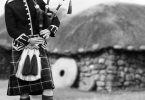You may not have thought of using membership records in your genealogy research, but they are quite useful tools. Why are these records to seldom used by genealogists? It is mostly because it is not common practice to take the time to identify the membership groups an ancestor may have belonged to, so the records of these groups do not get searched as a result. However, membership records, while sometimes minimal in information, can occasionally be genealogical gold mines.
Another reason these records are not often used by genealogists is that most of them are still not digitized, which makes them challenging to find. In most cases, once a membership group for an ancestor is identified, a genealogist will have to write to the national (or sometimes local) headquarters of that group to ask someone there to do a record search. Because they are not easily found, membership records become overlooked by genealogists.
What kind of information might you find in membership records? Well, the names of members is an important one. Some records will only have the names. This is still useful because they can place your ancestors at a certain place at a certain time. Also, other members of the same group with the same surname may be ancestors of yours. These names give you additional names to research, to see if and how they are part of your family.
If a member was visiting from another location, the location of their “home” group is usually noted. This allows a genealogist to know where to look for more information on that ancestor (and not just in membership records, but in all the other types of genealogical records).
There might be additional information on your ancestor in some membership records. Things such as an ancestor’s age, marital status, residence, occupation, and more may be included. If membership required a sponsor, the sponsor’s name will be listed, allowing you to research their connection. In some groups, a relative had to be the sponsor, and if that sponsor’s name is included, it can either provide you with a newly discovered ancestor to research, or even break down a genealogical brick wall by providing long-sought parent names, grandparent names, sibling names, children’s names, spouse names, and more.
Occasionally, you might even find a photograph of an ancestor in membership records. These are always thrilling finds for genealogists, particularly if there was no known photo of the ancestor in your genealogical records.
As you can see, researching membership records can be quite useful in making your genealogy research more accurate and far richer. It is worth the time it takes to find if your ancestor was a member of anything, and then to contact that group for more information about their membership. If the membership records you seek are among the few that are online, even better. You want to add these to your research tools.






